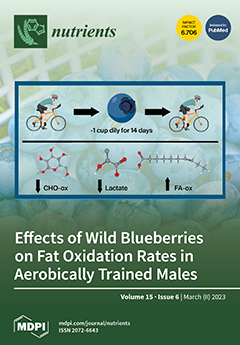Maternal obesity is an intergenerational vicious cycle and one of the primary causes of cognitive deficits and high anxiety levels in offspring, which often manifest independently of sex. It is proven that curbing the intergenerational inheritance of obesity through early intervention during the gestation period has a positive outcome on the body composition, cognitive function, and anxiety level of the offspring. A recent discovery shows that the consumption of
Elateriospermum tapos (
E. tapos) seed extract modulates body mass and ameliorates stress hormones in obese dams, while a probiotic bacterial strain can cross the placenta and boost a child’s memory. Thus, we speculate that probiotics are the best medium to integrate plant extract (
E. tapos extract) to access the effect on the child’s cognition. Thus, this study aimed to investigate the early intervention of
E. tapos yoghurt in obese dams in the cognition and anxiety levels of male offspring. In this study, 40 female rats were fed with a high-fat diet (HFD) to induce obesity before pregnancy, while another 8 rats were fed with standard rat pellets for 16 weeks. Upon successful copulation, treatment was initiated for the obese dams up to the postnatal day (PND) 21. The groups included normal chow and saline (NS), HFD and saline (HS), HFD and yoghurt (HY), HFD and 5 mg/kg
E. tapos yoghurt (HYT5), HFD and 50 mg/kg
E. tapos yoghurt (HYT50), and HFD and 500 mg/kg
E. tapos yoghurt (HYT500). All rats were euthanised on PND 21, and the body mass index (BMI), Lee index, and waist circumference were measured for the male offspring. Hippocampal-dependent memory tests and open field tests were conducted to access for cognition and anxiety status. Fasting blood glucose (FBG), total fat (%), insulin, leptin, lipid profile, and antioxidant parameter on serum and hypothalamus (FRAP and GSH) were accessed on PND 21. The result shows male offspring of 50 mg/kg-supplemented obese dams have comparable total fat (%), lipid profile, insulin level, FBG level, plasma insulin level, recognition index, low anxiety level, and improved hypothalamic FRAP and GSH levels to the normal group. In conclusion, this study highlights that the effect of early intervention of our novel formulation of
E. tapos yoghurt in obese dams alleviates cognitive deficits and anxiety in male offspring by modulating metabolic profiles at the dose of 50 mg/kg.
Full article






